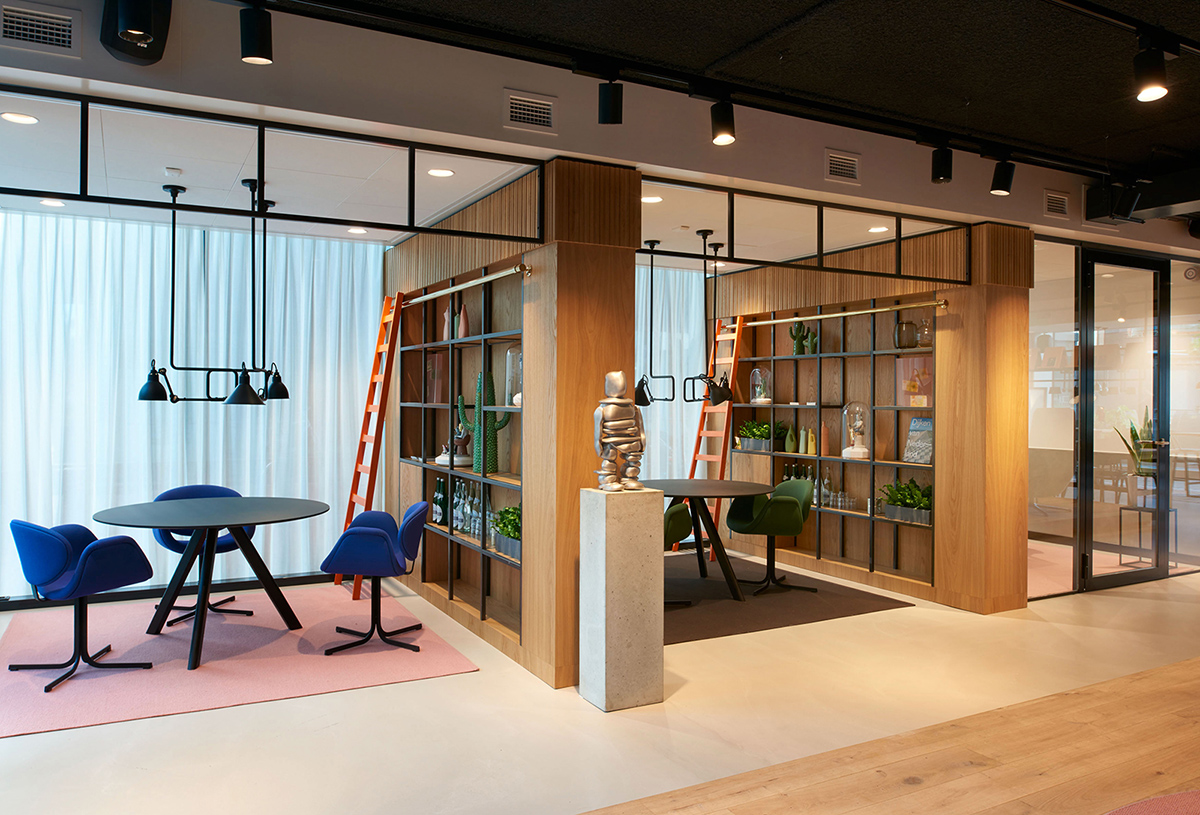Office Design: Is it Worth the Investment?
While great design is easy to see, sometimes the ROI isn’t and it can leave people asking, is office design really worth the investment? But what if we phrased that question in a new way: Is optimising effectiveness, boosting productivity, attracting top talent and encouraging innovation worth the investment? Well, that’s probably an easier question to answer with a resounding yes.
This year, the Gensler Research Institute registered the highest workplace effectiveness scores of any Workplace Survey over the last 15 years and found that workplace effectiveness is directly connected to “improvements in the physical and experiential nature of the workplace itself.” The survey found that providing a great workplace experience has direct and measurable performance benefits and that the companies who scored in the top quartile on workplace experience and employee engagement benefited from 21% higher profit, 41% lower absenteeism and 10% higher customer loyalty.
In fact, the Gensler research is one of many studies that document the benefits of effective office design and warn of the consequences to companies who don’t take heed of the advice. On it’s own, the effectiveness of a workplace environment plays a significant part in whether an individual would be likely to recommend their company to a peer and in a survey by Management Today magazine, a third of respondents said that they were too ashamed of their offices to bring back colleagues or clients. BCO president and CABE Commissioner Paul Morrell says, “this is the kind of gap which should worry management – and which, were it to occur in any other discipline in business, would almost certainly get urgent attention in the boardroom.”
CELEGNE OFFICES IN MELBOURNE | image source: officesnapshots
So why are companies continuously wary or reluctant to make the investment in office design? Well without access to the right data, it can be hard for companies to compare the spend with rival investments such as training, tech, marketing or management development. As UK chief executive of Regus parent company IWG, Richard Morris notes in the Raconteur report, Future Workplace, “It’s not easy isolating design vis-à-vis culture or leadership.”
But we’re in a time where design should not be isolated from company culture, performance or process. Actually, it is directly correlated and should be considered as a tool for development in these areas. It is undeniable that the design, layout and quality of amenities in the workplace affect efficiency, experience and effectiveness and the Gensler U.S. workplace Survey 2019 found that the workplaces optimising effectiveness and experience in tandem were consistently associated with the highest employee engagement and performance scores. This optimisation of experience was synonymous with offering the right environments and choices for work modes, showing that office design is important to create successful spaces for focus, collaboration, learning and socialising.
ING AMSTELVEEN OFFICE | image source: officelovin
Simply put, when employees are given the right environments to facilitate the different work modes, they are more effective, with increased productivity and performance levels. Highly successful workplaces are driven by high levels of choice plus variety and balance of working environments. The Gensler Survey found that successful organisations invested in amenities that were directly connected to people’s needs and preferences. These most valuable amenities directly supported the work process and included spaces for innovation, making, collaboration and quiet places to perform focused work.
Another Gallup Inc. survey of more than 150 organisations found that “business units with many employees who agreed that someone encourages their development were much more likely to engage customers”. Amenities such as work cafes, innovation hubs, quiet/focus zones, phone rooms and outdoor spaces lead to a productive workforce who feel valued and looked-after; making these hybrid settings that combine workspace and considered amenities, a mark of optimal organisations.
WEWORK IRVINE | image source: officelovin
And indeed it pays to have employees who feel valued and love the environment in which they work as employees’ wellbeing will directly affect a company’s profits; in the Gallup Inc. survey, ‘The Economics of Well-Being’, they found that “each person’s wellbeing is critical" and ultimately affects an organisation’s bottom line. The study discovered that employees who are thriving in overall wellbeing have 62% lower health-related costs compared with employees who are suffering. Plus companies and “workgroups made up of employees with low ‘Career Wellbeing’ are less likely to retain workers and have more incidents of workplace injury and theft.”
It is inarguable that more-engaged employees are the key to business productivity and profit, and the research is showing that effective office design and great workplaces create engaged and loyal employees. Organisations who invest in creating a great workplace experience are evidently benefitting from higher profits, lower absenteeism, effective innovation and a more talented workforce.
However, if you’re looking to accelerate your business performance through office design, it’s important to choose the right design company to partner you. Too many workspace alterations are based on hot-button trends and ideas and don’t account for the nuanced complexities of the modern workplace. If you’re ready to take the next step in becoming a forward-thinking company that is focused on aligning space, culture, interaction and behaviour to create a great working environment, contact us to find out how we could work together to transform your workspace.



